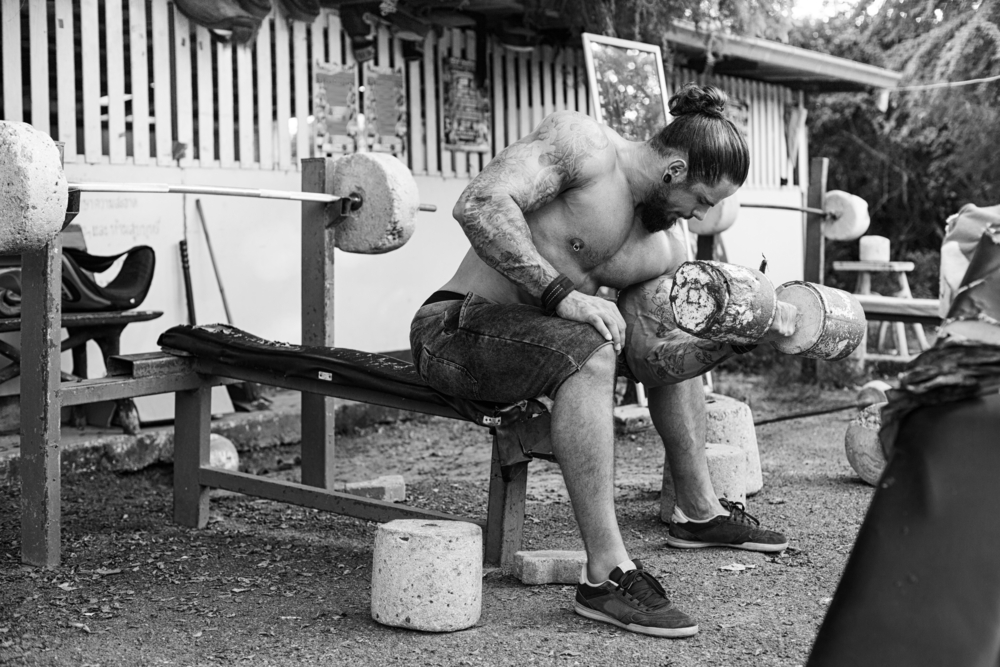
For serious strength gains and elite athletic performance, compound, multi-joint exercises such as squats, push and pull-ups reign supreme. These movements recruit more muscle fibers and thus provide a greater stimulus for adaptation. In addition to that, heavy compound exercises have shown to favorably impact the athlete’s hormonal profile (Kraemer et al, 1987).
But make no mistake about it, isolation training still has its place. Once you’ve established a solid muscular foundation (don’t waste your time as a beginner) you can use this training method to build additional size and sculpt a well-proportioned physique. Isolation work allows you to target and overload specific muscles, maximizing sarcoplasmic hypertrophy and promoting a fuller, rounder muscle.
The lost son
Personally, I condemned this type of training for long stretches of my athletic career, focusing exclusively on heavy compound movements. In the last couple years I’ve come to appreciate higher rep isolation work, though. It’s a different animal and the results speak for themselves. Using curls, extensions, lateral raises (aka laterals) and maximizing the time under tension, I was able to add some serious size to my arms and shoulders.
I prefer to do isolation training using my bodyweight as resistance. In my experience, ring and/or suspension (e.g. TRX) curls and extensions are superior to traditional bodybuilding exercises.
While performing barbell or dumbbell curls (and extensions), you inevitably lose muscular tension while moving the weight through space. Cables might offer a slight advantage to regular weights, but they’re still inferior to rings and suspension devices.
Why? Constant tension. Constant tension throughout the range of motion, provides a greater stimulus for growth. Once you do a couple sets of TRX curls, you’ll understand. The excruciatingly painful burn in your bi’s will bring you close to tears.
“But you can’t go heavy without weights.”
Muscular growth and adaptation is stimulated by:
- Mechanical overload,
- muscular fatigue
- and metabolic stress.
Progressive overload is a prerequisite and the top priority for building a standout physique. You must lift heavier objects, perform more complex exercises over time. There’s no way around it, regardless of program you choose to follow.
Hard and heavy compound exercises provide the mechanical overload, while higher rep “pump” work maximizes metabolic stress and muscular fatigue. Have you ever noticed bodybuilders pumping baby weights in the gym? They’re on to something.
How to incorporate constant tension training into your routine
Shoot for 2-4 compound and 1-2 isolation exercises per training session. 3-5 sets per exercise. Go heavy on your main lifts, and lighten the load for your isolation exercises. 12-15 reps is great, 15-20 is where the fun starts.
The best isolation exercises to sculpt your physique:
- Biceps curls: No introduction needed. Ring or TRX curls are preferred.
- Triceps extensions: Depending on how you perform these (grip/ equipment used), you can target the different “heads” of the triceps.
- Laterals: Hitting the medial deltoid, this exercise adds roundness to the shoulder.
We want to stay in the double digit rep range here so use a weight (or angle) that allows you to get the required reps with picture perfect form, keeping the tension on the targeted muscle throughout.
Difficulty level: Nightmare
You can take this a step further by incorporating rest pause sets. Pick a weight you can get 10-12 reps with, and perform your set to momentary muscle failure. Rest for 10-15 seconds and keep going until you reach 20 reps. Take mini breaks during your set as needed, but try and get to the 20 reps as fast as possible. Rest for 2 minutes and repeat for another 2-3 rounds. This intensity technique works especially well for the exercises outlined above
Now go out there and have some fun.
Thank you for reading
Victor
Resources
Kraemer, W.J./ Noble, B.J./ Clark, M.J./ and Culver, B.W. Physiologic responses to heavy-resistance exercise with very short rest periods. Int J Sport Med 8: 247–252, 1987
, G.E./ , W.C./ , A./ , P.M./ Muscle fiber hypertrophy, hyperplasia, and capillary density in college men after resistance training.
Schoenfeld, B.J. The mechanisms of muscle hypertrophy and their application to resistance training. J Strength Cond Res. 2010 Oct;24(10):2857-72
Na du …